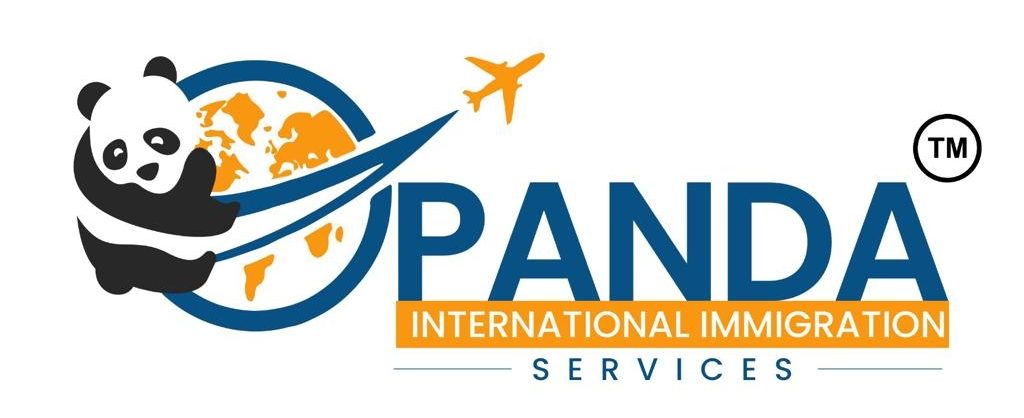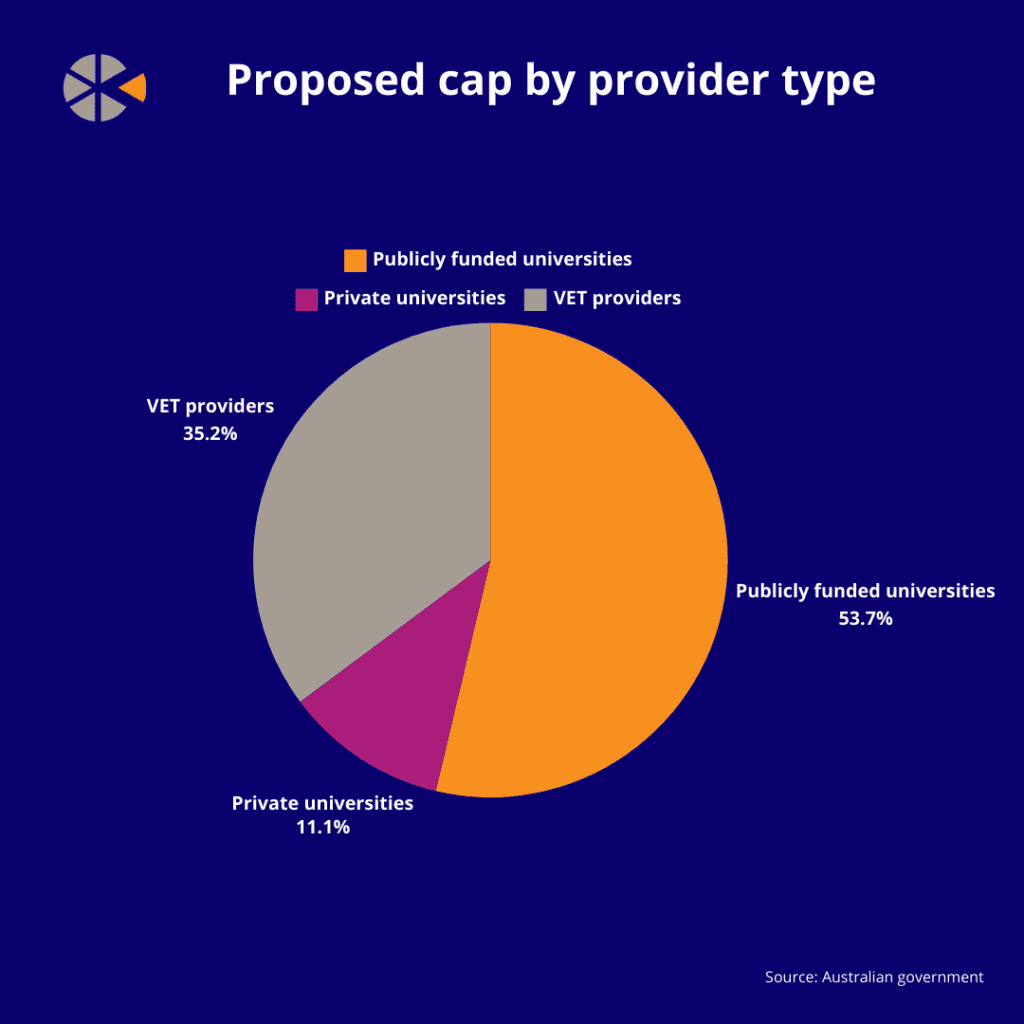On Tuesday morning (August 27), the Australian government unveiled the details of new proposals to limit the number of international students coming to Australia, leaving the sector reeling as it considers the impact the move could have on different parts of the market.
While all higher education providers are set to be hit by the national planning levels – which will limit 2025’s intake to a total of 270,000 new international students across Australia – VET providers are expected to be hit especially badly.
Publicly funded providers are set to be the least badly affected, while private universities will fare somewhere in the middle if – and only if – the proposed legislation passes into law.
The announcement comes hot on the heels of the second day of senate hearings for the proposed ESOS amendment, which, on top of capping overall overseas intake, suggests bringing in new ministerial powers to set the number of international students on each individual course.
Some details of the cap are yet to come (more on that later) but the government has released key information. The PIE’s done the hard work for you – so read on to find out everything we know so far.
OK, so how does the cap work?
The government has proposed introducing something called the national planning level (NPL), which means that no more than 270,000 new overseas students can be enrolled in Australia during the entire calendar year of 2025.
Here’s a breakdown of how different types of providers will be affected if the plans come to fruition:
Publicly funded universities will be limited to a total of 145,000 new student commencements next year, which is around the level these providers hosted in 2023.
Private universities and non-university higher education providers will be allocated a total of 30,000 new student commencements – around the same level as 2019.
VET providers will be allocated a total of 95,000 new student commencements.
Students taking stand-alone English language courses will not be affected by the cap.
Individual institutions have been given specific limits on international student enrolments. This will be known as an international student profile (ISP).
Most have remained tight lipped on their limits – with many still working out their allocations based on the complex methodology used to calculate numbers for each institution.
However, the government has said VET providers with a “higher ratio of international students will receive a lower allocation, encouraging them to diversify their student base”.
The government has said: “The NPL will support a managed international education system that is designed to grow sustainably over time, by establishing the number of new international students able to commence their education onshore in Australia in any year.”
Wait, what’s a new student commencement?
Good question. The new terminology has left many stakeholders baffled, with consultancy provider Studymove’s managing director Keri Ramirez pointing out in a LinkedIn post that the Australian government should clarify exactly what it means by “new student commencement”.
He elaborated that commencement refers to “a new enrolment in a particular course at a particular institution”, whereas a new student refers to a student who is “a new arrival to Australia”. Government statistics count vastly different numbers for each metric – with 207,522 higher education student commencements and 152,511 new students noted in 2023 respectively.
The cap legislation states that the allocations will be based on the number of new overseas student commencements (NOSCs).
A student will be counted as a NOSC when they are onshore in Australia and starting their first non-exempt course at their first provider
Confusingly, this new term combines the definitions for both commencements and new students, meaning that a student will be counted as a NOSC when they are onshore in Australia and starting their first non-exempt course at their first provider.
Theoretically, this leaves students open to switch to another provider once they have reached Australia without being counted as a NOSC. However, this is fairly unlikely given overseas students now have to take the Genuine Student Test – designed to crack down on so-called “course-hopping” – making it much more difficult to keep switching courses as a way to extend the right to remain in the country.
So which students are exempt from the cap?
The cap will not apply to several groups of students.
These include:
School students
Postgraduate research students
Students undertaking stand-alone English language courses (ELICOS)
Non-award students
Australian government-sponsored scholars
Students who are part of an Australian transnational education arrangement or twinning arrangement
Key partner foreign government scholarship holders
Students from the Pacific and Timor-Leste.
How are international student numbers expected to change next year?
Given the plans have been designed the curb the number of international students coming to Australia, numbers are, unsurprisingly, expected to fall – especially in the VET sector, which has seen marked growth in recent years, in line with higher uptake from overseas students.
It’s difficult to quantify exactly how different next year’s intake will be, though, because finding comparable year-on-year data for NOSCs is nigh on impossible.
However, according to Studyportals estimates, there were roughly 182,000 higher education international student commencements in 2024 by the beginning of this year. That compares to a combined total of 175,000 allocated places for new overseas students for public and private universities in 2025.
But VET providers will feel the shock of the cap more acutely. The most recent National Centre for Vocational Education Research (NCVER) data logs a total of 226,675 fee-for-service international students for 2022 – with just 90,000 new spaces set for 2025.
But why has the government proposed the cap in the first place?
It’s a long and complicated story, but concerns around the growing number of international students in the country have been surging since the pandemic ended and hostility towards overseas students has been compounded by a severe shortage of student accommodation.
Concerns have also been raised about the number of students coming to study in Australia under false pretences – enrolling in bogus courses as a means to fast-track a visa. This led to 2023’s Migration Review, which brought in a raft of so-called “integrity measures”, including the Genuine Student Test, to deter those trying to enter the country to work under the guise of being a student.
For more details, check out this PIE explainer .
It sounds like big changes are afoot. What’s the sector’s reaction been?
As you can imagine, stakeholders haven’t exactly welcomed the NPL, blasting it as a “crude spreadsheet formula” that will only harm Australia’s ASD$48 billion international education industry.
But the full effect of the cap is yet to be determined as institutions scramble to work out what their individual allocations will be. It is understood that the VET sector is still waiting for numbers reserved for each provider.
Yikes. Can we do anything to stop the cap?
It’s important to note at this point that nothing is set in stone. The legislation still needs to make its way through parliament before it becomes law.
Before the cap comes into effect, it will have to be passed by the Australian senate – meaning there’s still a dim hope of reprieve.
But with hostile political and media rhetoric against international students reaching fever pitch in the country, it remains unclear whether any amount of lobbying from the sector will stop the legislation in its tracks.
The post Explained: the national planning level in Australia and how it could affect you appeared first on The PIE News.


